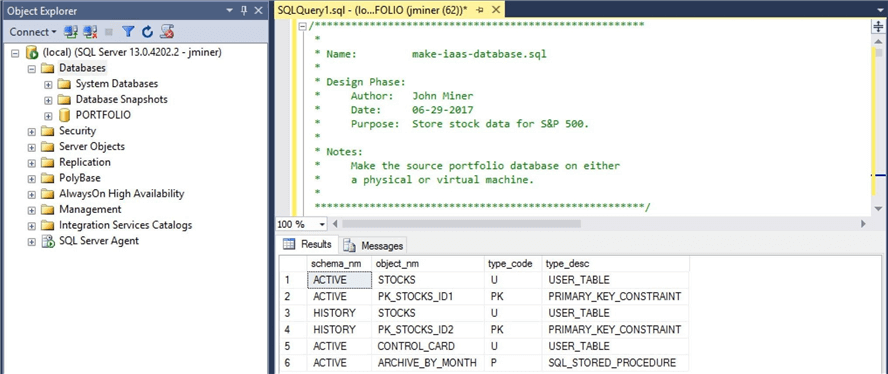
System versioned tables System versioned tables, also known as Temporal Tables, can now be created in Azure Data Studio, and these tables provide historical information about column data at any given point in time. Azure Data Studio works for both Azure SQL and on-prem SQL Server installations. Azure Data Studio now offers system versioning, graph tables, and Memory-Optimized Tables. Sure enough, it does! You can write out the list of columns in a table in your query editor by dragging the column folder for the table into the query editor window: Azure Data Studio isn’t just for Azure SQLĭon’t let the name fool ya. Stepping through the Peek Definition example made me wonder if one of my favorite lazy hacks from SQL Server Management Studio works in Azure Data Studio. Bonus: Dragging the Columns folder into a query edit works just like in SSMS The example given in a tutorial of peeking at a table’s definition when writing an insert statement is right on. I also hadn’t realized that Azure Data Studio supports Peek Definition functionality natively. ‘Peek definition’ functionality exists, too There are built-in snippets for lots of things – data definition changes like creating indexes or adding columns, data modification tasks like inserting or deleting rows, or management tasks like listing databases or finding space used.īut you might want to create your own snippets, too. This will initialize a drop-down list which you can arrow through: You can create your own snippets To access snippets, simply type sql into the query editor itself. When your table is located, right-click on the table and select Script as Drop. I assumed that I’d open the Command Palette to insert a snippet. To delete a table, right click on the tables folder in the object explorer. And I admit that as soon as I skimmed the tutorial and saw there were snippets, I tried to use them the wrong way. I had no idea that Azure Data Studio had built in snippet functionality. Each extent can hold up to millions of records.

Extent (data shard) is the internal structure where data is stored.
alter-merge tableConsider a database or table that is set for 90 days of retention. The tutorial taught me a couple of things that I’ve not noticed about Azure Data Studio, even though I’ve used it for a couple of years. This is a very efficient and convenient way to remove old data. This Quickstart is solid and is great for someone new to Azure Data Studio.Īt the end of the Quickstart it suggested I try the Tutorial: Use the Transact-SQL editor to create database objects - Azure Data Studio. From a list of entites it creates batches of up to 100 rows while making sure only to group entities with the same PartitionKey to not violate the API requirements.Today I walked through the Use Azure Data Studio to connect and query Azure SQL database Quickstart. The batch processing of our entities is being handled in the second extension method. To do this the ForEachAwaitAsync() extension from the NuGet package comes in handy. Knowing that Azure will return all rows sorted by PartionKey + RowKey we can directly go ahead and delete each page before we request the next one. We also only need the PartitionKey and RowKey for each entity, so we’ll filter the query accordingly by passing a list of column names as the select parameter. With each call to the Storage Account we request the maximum of 1000 entities per page.


First off, we need to query all rows assuming we don’t know all PartitionKey & RowKey combinations in the table already. I created two extension methods for the SDK’s TableClient to make it comfortable reusing the code. However, we cannot be sure when exactly we’re able to create a new table with the same name since it can take up to a minute or even longer for Azure to actually get rid of the table. Note: When deleting a lot of data from Azure Table Storage usually the fastest way is to just drop the whole table. We’ll try to optimize for speed while also being mindful about the memory.
AZURE DATA STUDIO ERASE DATA FROM A TABLE HOW TO
In this post we will see how to efficiently delete all rows in an Azure Table Storage using the new(ish) SDK.


 0 kommentar(er)
0 kommentar(er)
